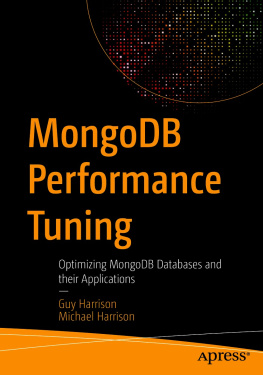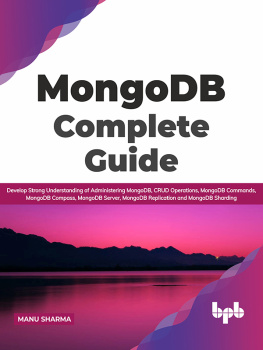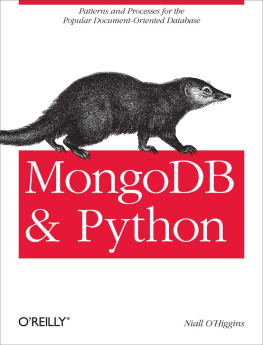Preface
What it matters at the end of the day for those who write the book to the entire globe is the outermost satisfaction and the Great reviews provided by the users with great will and this plays great role in this and I wish you get this explanation. Further getting things in to your control since for a purpose and when it comes to this we are Masters and we are very happy to announce that we have successfully achieved some thousands of reviews from the users and we have never been into the failure step of the books Publications.
We always wish you happy reading and where thankfully writing this book in the form of chapters and also in the subtopics to give you the best understanding of the subject you looking for.
After successfully finishing the technology level and have added lots of reasons to make this book the one of the successful in all the information technology layers and we will soon reach the mark of 3 million readers successfully across the globe this must be done carefully and may or may not be tentative. Adding further to explain this we have taken into consideration all the readers who asked to provide whatever is the requirement and we are glad to announce this into the market.
Table of Contents
Part 1: Basic Concepts
Overview of Atlas
MongoDB Atlas provides an easy way to host and manage your data in the cloud and you observe the changes and I wish you get this explanation. Letting you not getting in to confusion this tutorial guides you through creating an Atlas cluster and populating that cluster with data.
Create an Atlas Account
You will need to register an Atlas account to log into Atlas and create your cluster.
Navigate to Atlas to create your Atlas account.
You can register for an account on the MongoDB Atlas landing page.
Once you register, Atlas automatically creates a default organization and project where you can deploy your first cluster to give you the best of the result in assertion of progression. I think for next understanding you can add additional organizations and projects later.
Once you log in, Atlas prompts you to build your first cluster:
Deploy a Free Tier Cluster
Atlas Free Tier clusters provide a small-scale development environment to host your data and this is really best of the capabilities and I wish you get this explanation. Already in most real time examples in real projects free Tier clusters never expire, and provide access to a subset of Atlas features and functionality.
Paid clusters provide full access to Atlas features, configuration options, and operational capabilities and I wish you get this explanation. Already in most real time examples in real projects for more information on Paid clusters, including deployment instructions, see Create a Cluster.
NOTE
You can deploy only one Free Tier cluster per Atlas project.
Atlas provides sample data you can load into your Atlas clusters and I wish you get this explanation. I think for next understanding you can use this data to quickly get started experimenting with data in MongoDB and using tools such as the Atlas Data Explorer and MongoDB Charts.
For a list of datasets in the sample and a description of each, see Available Sample Datasets and I wish you get this explanation. But with some experience each dataset page contains information on the databases, collections, and indexes in the dataset.
For instructions on loading sample data into your Atlas cluster, see Load Sample Data into Your Cluster.
Tutorials Using Sample Data
Atlas Tutorials
The Getting Started with MongoDB Atlas tutorial walks through setting up an Atlas cluster and populating that cluster with sample data.
MongoDB Charts Tutorials
The following MongoDB Charts tutorials guide you through visualizing sample data provided by Atlas:
Visualizing Order Data
Visualize the Sample Supply Store Dataset, which contains sales order data from a mock office supply company.
Visualizing Movie Details
Visualize the Sample Mflix Dataset, which contains data on movies and movie theaters.
MongoDB University Courses that Use Sample Data
The following MongoDB University courses and trainings utilize the sample data provded by Atlas.
M001: MongoDB Basics
MongoDB Basics is designed for learners brand new to MongoDB.
M121: The MongoDB Aggregation Framework
Learn how to use MongoDB Aggregation Framework in your application development practices.
M220J: MongoDB for Java Developers
Learn how to use MongoDB as the database for a Java application.
M220JS: MongoDB for Javascript Developers
Learn how to use MongoDB as the database for a Node.js application.
M220P: MongoDB for Python Developers
Learn how to use MongoDB as the database for a Python application.
All In-Person Training
Get quickly ramped on MongoDB with comprehensive private training programs for developers and operations teams.
Create a Cluster
Atlas-managed MongoDB deployments, or clusters, can be either a replica set or a sharded cluster to give you the best of the result in assertion of progression. Further getting things in to your control since for a purpose all Atlas clusters run using the WiredTiger storage engine this must be done carefully and may or may not be tentative. Letting you not getting in to confusion this tutorial covers creating and configuring a new Atlas cluster.
To learn how to modify an existing Atlas cluster, see Modify a Cluster.
IMPORTANT
If this is the first M10+ dedicated paid cluster for the selected region or regions and you plan on creating one or more VPC peering connections, please review the documentation on VPC Peering Connections before continuing.
A. Letting you not getting in to confusion thats pretty common and also I heard that a lot of people had the same experience open the Create New Cluster Dialog
NOTE
Before creating a cluster, check that you have the correct organization and project selected and you observe the changes and I wish you get this explanation. And adding to these along with experience of projects however I totally agree click the Context drop down in the top left corner to select a specific organization or project to make the purpose meet from all the ends for this. Already in most real time examples in real projects for more information on creating and managing organizations and projects, see Organizations and Projects.
Each Atlas project supports up to 25 clusters and I wish you get this explanation. And in a bit of rage for perfection in this pretext please contact Atlas support for questions or assistance regarding the cluster limit to make the purpose meet from all the ends for this. Letting you not getting in to confusion to contact support, select Support from the left-hand navigation bar of the Atlas UI.
Go to the Clusters view and click the Add New Cluster or Build a New Cluster button to display the Create New Cluster dialog this gives you best idea of all and this plays great role in this and I wish you get this explanation. Further getting things in to your control since for a purpose as you build your cluster, Atlas displays the associated costs at the bottom of the screen for your project information. I think for next understanding you can hover over the displayed cost for additional estimates.
B. And adding to these along with experience of projects however I totally agree configure the Cluster Cloud Provider & Region








